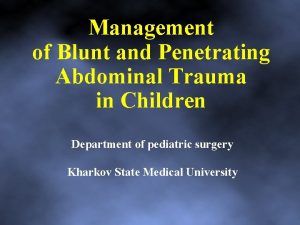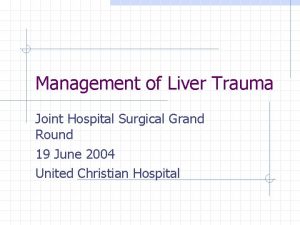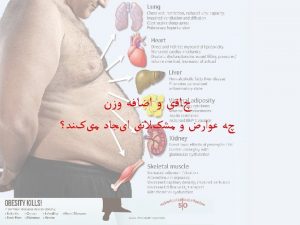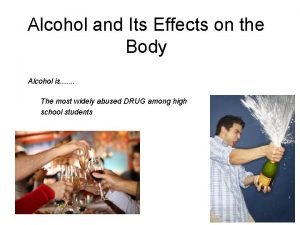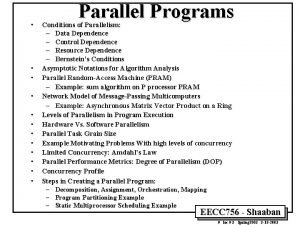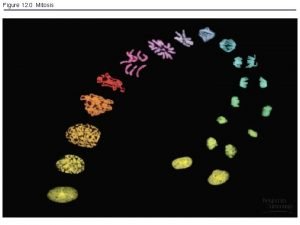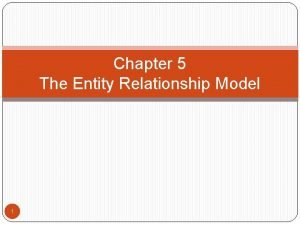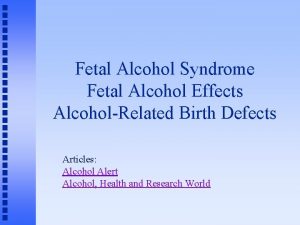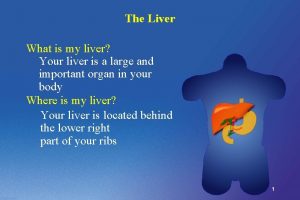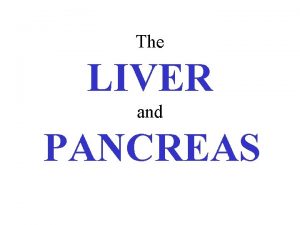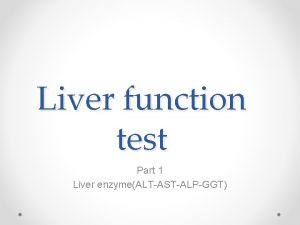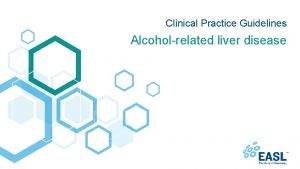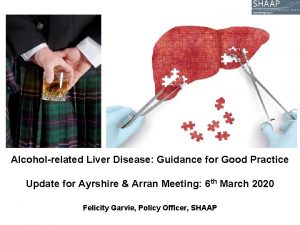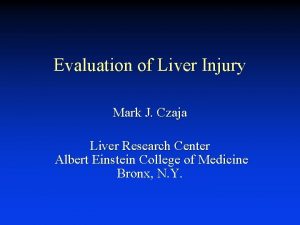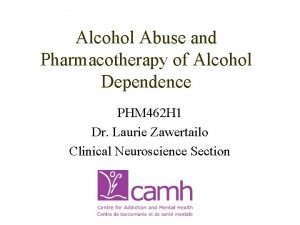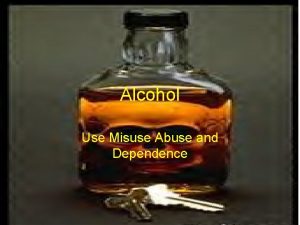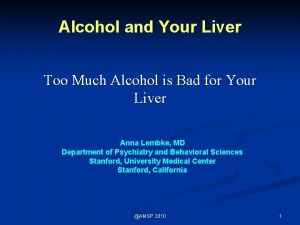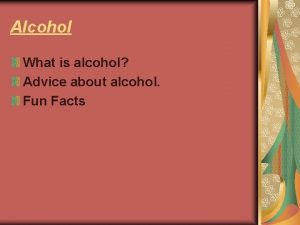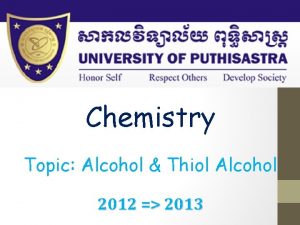The Genetics of Alcohol Dependence AlcoholRelated Liver Injury





























- Slides: 29

The Genetics of Alcohol Dependence & Alcohol-Related Liver Injury Andrew Mc. Quillin Ph. D University College London Molecular Psychiatry Laboratory Division of Psychiatry a. mcquillin@ucl. ac. uk

Why is it important to understand the genetic effects underlying alcohol dependence? • Develop an understanding of the direction of causality To examine the relationship between ADS and depression, ADHD, antisocial personality disorders etc… Is ADS primary or secondary to these? • Develop an understanding of the within individual factors that may be at play This may help in the development of individualised diagnostic and/or treatment plans • Understanding biological subtypes of ADS may help in the identification of environmental/social factors involved in ADS

The Size of the Problem in the UK • 33% of men and 20% women drink alcohol in excess of recommended levels • 8% of men and 5% of women are alcohol dependent • 114, 920 people undergoing treatment for alcohol problems in England (NDTMS 2014; PHE gateway number: 2014458) • 6, 490 alcohol related deaths in England (2012 figures; HISC 2014) • NHS costs £ 3. 7 bn per year in England • Societal burden is estimated at ~£ 30 bn

The Size of the Problem in the UK Alcohol related UK Hospital admissions Per day Per annum 2002/2003 1, 400 510, 700 2010/2011 3, 200 1, 168, 300

Genetics of Alcohol Dependence • Twin, family & adoption studies have demonstrated the role of genetics in the development of alcohol dependence with heritability estimates of 40% to 60% • Family studies show very high rates in 1 st and 2 nd degree relatives (~ 30%) • This is evidence of genetic and cultural factors because 1 st degree relatives should have a higher rate than 2 nd degree relatives if genetic factors predominated

1 99 1 ck en s Pi 98 4 8 98 8 19 8 an vu o 1 Ko sk en sm ot te G s 1 ik i Sv 98 1 g 1 ur lin G 98 1 c 1 ru be H 96 0 j 1 Ka i Pair wise concordance in twin studies of alcohol dependence 80 70 60 50 40 30 20 10 0 MZ DZ

Adoption studies • Original studies in Denmark and Sweden • Child adopted out • Father alcoholic: 18% sons affected • Father non-alcoholic: 5% sons affected

Alcohol Flush-Reaction Aldehyde Dehydrogenase (ALDH) and/or Alcohol Dehydrogenase (ADH) Prevalence of the flush reaction risk allele in East Asian individuals upto 92 percent

Alcohol Metabolism Acetaldehyde Alcohol ADH ALDH

Aldehyde Dehydrogenase 2 Genetic Variation in East Asians (Japanese); rs 671 (Glu 504 Lys) P < 0. 001 100 75 ALDH 2*2/2*2 50 ALDH 2*1/2*2 ALDH 2*1/2*1 25 0 (n=400) (n=500) (n=1300) (n=655) (n=461) ADS-1979 ADS-1986 ADS-1992 ADS-Combined ADS (1996) Controls (1996) Higuchi et al 1994 and 1996

Developmental trajectory and environmental moderation of the effect of ALDH 2 polymorphism on alcohol use. Irons DE, Iacono WG, Oetting WS, Mc. Gue M. Source Department of Psychology, University of Minnesota, 75 East River Road, Minneapolis, MN 55455, USA. iron 0012@umn. edu The protective effect of the ALDH 2*2 allele increases over the course of adolescence and young adulthood and is modified by the environmental influence of parental alcohol use and misuse. As such, ALDH 2 provides a model system for exploring the nature of gene-environment interplay across development.

Alcohol Dehydrogenase Genetic Variation in the UK population

ADH 2 (ADH 1 B) variant rs 1229984 (Arg 48 His) 100 fold increase in oxidation of ethanol to acetaldehyde


ADH Results • ADH variant more frequent in controls than cases • Variant is protective against alcohol dependence • Data in agreement with the ‘excess acetaldehyde’ mechanism

ADH Population Attributable risk * • Population attributable risk estimate = -0. 7% • British/Irish ADS individuals in England 2. 3 million • Absence of the variant in this population would mean 17, 000 more ADS cases *Natarajan et al, A simple method of determining confidence intervals for population attributable risk from complex surveys, Stat Med, 2007

Alcohol-Related Cirrhosis Around 20% of individuals who chronically misuse alcohol will develop cirrhosis

Alcohol-Related Cirrhosis • The concordance rate for alcohol-related cirrhosis is three times higher in monozygotic than dizygotic twins

Identification of PNPLA 3 as a liver disease risk gene; rs 738409 Ile 148 Met PNPLA 3 encodes the protein Adiponutrin rs 738409 (Non Alchoholic Fatty Liver; Romeo et al, 2008)

PNPLA 3 & Alcoholic Liver Injury

PNPLA 3 & Alcoholic Liver Injury • What, if anything, is the association between rs 738409 in PNPLA 3 in alcohol-dependence per se? • Are the findings in alcohol-related cirrhosis robust? • Are other independent mutations in PNPLA 3 also involved in disease progression?

PNPLA 3 & Alcoholic Liver Injury rs 738409 association analysis P=8 x 10 -07 Allele Frequency (%) P=2 x 10 -07 35 30 25 20 15 10 5 0 (n=1249) (n=1513) (n=332) (n=321) Controls ADS No Liver Disease Cirrhosis

PNPLA 3 & Alcoholic Liver Injury SNP Mutation MAF (%) p Odds ratio (95% CI) 8. 19 x 10 -7 1. 62 (1. 34 -1. 96) Cirrhosis Controls rs 738409 Ile 148 Met 31. 6 22. 0

PNPLA 3, Alcoholic Cirrhosis & HCC (hepatocellular carcinoma) 70 Frequency (%) 60 50 CC 40 CG 30 GG 20 10 0 Controls Cirrhosis HCC All who developed HCC were male and all had been abstinent for many years

Cirrhosis & Survival, by Genotype

Population Attributable Risk (PAR) * • • PAR for G allele of rs 738409 = 21. 8% Adults in England of British or Irish ancestry drinking at risk = 3, 460, 400 • Number at life-time risk for developing alcohol-related cirrhosis (~20%) = 692, 080 • This SNP accounts for 150, 873 cases *Natarajan et al, A simple method of determining confidence intervals for population attributable risk from complex surveys, Stat Med, 2007

PNPLA 3 & Alcoholic Liver Injury Summary • • No association between rs 738409 in PNPLA 3 and alcohol dependence per se • Other independent variants in PNPLA 3 are also involved in disease progression • Carriage of the rs 738409 variant allele modifies not only cirrhosis risk but also the development of HCC and overall survival and should be considered when managing individuals drinking at harmful levels and in patients with established cirrhosis • Increasing psychosocial support • Screening for HCC • Selection for transplantation The association with alcohol-related cirrhosis is robust: PAR for G allele of rs 738409 = 21. 8%

Conclusions • Strong evidence for a genetic influence on alcohol drinking behaviour • Some of the consequences of risky alcohol behaviour appear to be under genetic control There is more to come on this but at the moment I am unable to share this with you • Large GWAS studies are underway and more are planned

Acknowledgements NIHR MHRN UCL: Michael Way, Giorgia Quadri, Sally Sharp, Radhika Kandaswamy, Gregory Lydall, Katherine Worlley, Robert Blizard, David Curtis, Allan Thomson, Marsha Morgan, Hugh Gurling KCL/Io. P: Irene Guerrini, David Ball, John Strange EL: Harish Rao Max Glatt Unit, CNWL: Raquin Cherian, Priyanthi Gunwardena, , Girija Kottalgi, Shamir Patel, Karim Dar Greater Glasgow and Clyde: Audrey Hillman, Ewen Douglas, Sherhzad Qureshi, Gerry Reynolds, Sameer Jauhar, Mathis Heydtmann, Iain Smith Newcastle: Aideen O’Kane Funders: Hobson Trust, Brain Damage Research Trust, Neuroscience Research Charitable Trust
 Battering intentional or unintentional
Battering intentional or unintentional Liver injury grading
Liver injury grading Liver injury grading
Liver injury grading Effects of alcohol on the liver
Effects of alcohol on the liver Effects of alcohol on the liver
Effects of alcohol on the liver Effects of alcohol on the liver
Effects of alcohol on the liver What is secondary alcohol
What is secondary alcohol Mild oxidation of alcohols
Mild oxidation of alcohols Galbraith dependence effect
Galbraith dependence effect What is a linear transformation linear algebra
What is a linear transformation linear algebra Ffa creed facts
Ffa creed facts Psychological dependence
Psychological dependence Program data dependence is caused by
Program data dependence is caused by Frequency dependence of dielectric constant
Frequency dependence of dielectric constant Anchorage dependence
Anchorage dependence What is meant by structure dependence
What is meant by structure dependence A dbms separates the logical and physical views of data.
A dbms separates the logical and physical views of data. Weak entity example
Weak entity example Thế nào là mạng điện lắp đặt kiểu nổi
Thế nào là mạng điện lắp đặt kiểu nổi Tỉ lệ cơ thể trẻ em
Tỉ lệ cơ thể trẻ em Lời thề hippocrates
Lời thề hippocrates đại từ thay thế
đại từ thay thế Vẽ hình chiếu đứng bằng cạnh của vật thể
Vẽ hình chiếu đứng bằng cạnh của vật thể Quá trình desamine hóa có thể tạo ra
Quá trình desamine hóa có thể tạo ra Các môn thể thao bắt đầu bằng tiếng nhảy
Các môn thể thao bắt đầu bằng tiếng nhảy Hát kết hợp bộ gõ cơ thể
Hát kết hợp bộ gõ cơ thể Sự nuôi và dạy con của hổ
Sự nuôi và dạy con của hổ Dạng đột biến một nhiễm là
Dạng đột biến một nhiễm là Thế nào là sự mỏi cơ
Thế nào là sự mỏi cơ Trời xanh đây là của chúng ta thể thơ
Trời xanh đây là của chúng ta thể thơ

